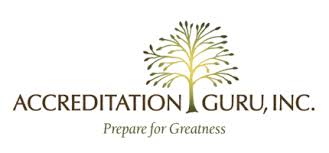To improve safety and treatment effectiveness for teens and young adults with behavioral and mental health issues, all members of the National Association of Therapeutic Schools and Programs (NATSAP) will need to be accredited as of January 1, 2023. NATSAP is a national resource for programs and professionals assisting young people with emotional and behavioral difficulties.
The NATSAP board of directors approved the accreditation requirement in October 2019. The announcement was made to members in February 2020 at NATSAP’s annual meeting.
The benefits of accrediting NATSAP members include the following:
- Improves safety and treatment effectiveness for NATSAP-member programs. This potentially will provide a stronger voice—one that could be heard with more credibility, authority and influence among federal and state legislators.
- Allows NATSAP to focus on supporting vs regulating schools and programs. Requiring accreditation enables bodies that specialize in
thoseassuring quality and safety to move to the forefront in helping programs abide by the highest of professional standards. - Allows NATSAP to focus on supporting schools and programs. This shifts the pressure to assure quality to the bodies that specialize in standards (a partial list of these organizations appear below).
- Demonstrates self-regulating. The Family First Act requires all NATSAP member programs accepting public dollars be nationally accredited. By taking action now and volunteering to hold the industry to a high standard, NATSAP members get a head start on the accreditation process before it is mandated.
“Before the board vote, we did our homework,” said Megan Stokes, Executive Director, NATSAP. “We polled our members, spoke to those who were not accredited, and talked with national accrediting bodies as well as insurance agencies that offer discounts to accredited programs.”
“Next, we read research articles that discussed safety and effectiveness at accredited programs versus programs that were not accredited. Finally, we conducted outreach to other associations requiring accreditation,” Stokes explained.
“Following our research, we arrived at a conviction that requiring accreditation was how NATSAP could live it’s association mission by guiding the way for all programs helping youth across the nation and world,” said Tony Mosier, Program Director, Telos Residential Treatment Center, Orem, Utah; and President, NATSAP.
Current approved accreditation organizations include [NOTE: additional organizations may be added to this list]:
Association for Experiential Education
National Independent Private Schools Association (Therapeutic Level 3 or 4)
To help NATSAP members comply with the new accreditation, the organization is offering sample policies donated by members that are already accredited, a mentor program comprised of volunteers, and workshops and presentations at conferences and meetings.
According to Stokes and Mosier, these efforts will help NATSAP continue to build an association defined by quality and excellence, comprised of programs holding themselves to stellar standards, and demonstrating they value safety and evidence-based outcomes.
For more information about NATSAP or the accreditation requirement, contact Megan Stokes at megan@natsap.org.
***NATSAP has asked several accreditation consultants to write a guest blog post discussing accreditation and what it means for a program to pursue accreditation. NATSAP does not promote or refer anyone consultant or business over another. ***
Prepare for Greatness! ™ – Accreditation Guru
Demystifying National Accreditation – PJS Connection Consulting
Navigating Accreditation – Tetra Solutions
About the National Association of Therapeutic Schools and Programs (NATSAP)
Founded in January 1999, NATSAP, a 501(c)(3) not-for-profit membership organization, is a national resource for programs and professionals assisting young people with emotional and behavioral difficulties. Located throughout the U.S., NATSAP members include therapeutic schools, residential treatment programs, wilderness therapy programs, young adult programs, and home-based residential programs. The Association is governed by an elected, volunteer Board of Directors comprised of representatives from its membership. NATSAP members are independently operated and owned; therefore, NATSAP does not provide placement services. All NATSAP member programs that treat children under 18 are overseen by state therapeutic licensure or accredited by major mental health bodies, and in some cases, both.




